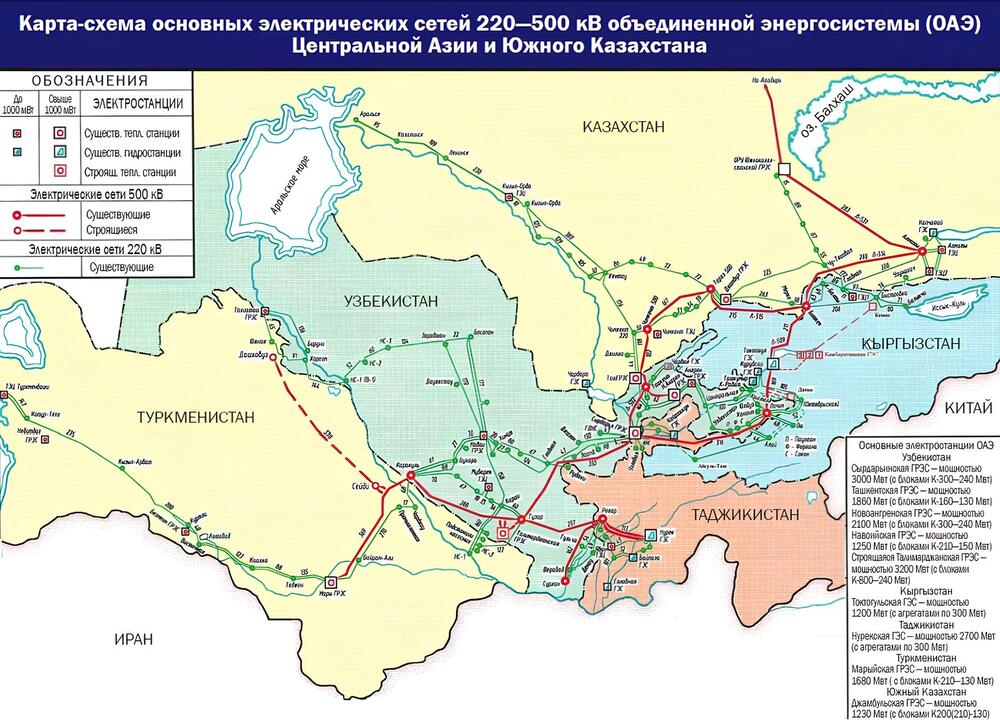The Shanghai Cooperation Organization (SCO) energy ministers/ meeting that took place in Kazakhstan’s capital, Astana, on June 20-21 has approved the Draft Strategy for the Expansion of Energy Cooperation for the period up to 2030.
The document reportedly defines the key areas of cooperation between the SCO member states in the energy sector: prospects for the development of the transit potential of energy resources and the possibility of diversifying export routes; formation of a new energy system with a balance of industry development priorities; modernization of traditional energy sources, systemic improvement of the industry; development of innovative technologies and science in the field of use of renewable energy sources, development of hydrogen energy; and searching for new solutions in the field of energy saving and increasing energy efficiency.
Meanwhile, the press center of the Ministry of Energy and Water Resources of Tajikistan (MoEWR) say that experts conclude that the discussion of the draft strategy marks Tajikistan's return to the Central Asian unified power grid.
Speaking at the meeting, Tajik Minister of Energy and Water Resources, Daler Juma, reportedly noted that facilities necessary for connection to the power grid had already been introduced into operation.
"This will enhance the reliability of the regional power system," the Tajik energy minister emphasized.
To support the reconnection of Tajikistan’s electricity system to the Central Asian unified power grid (CAUPG) through interconnection with Uzbekistan’s power system, the Asian Development Bank (ADB) approved a US$35 million grant in November 2018. This helps expand regional energy trade and improve regional energy efficiency among countries connected to the Central Asian unified power grid.

An interconnected power system in Central Asia benefits all countries, optimize power use, enhance regional energy efficiency, and reduce greenhouse gas emissions.
CAUPG is a regional electricity transmission network created during the Soviet Union era, and its operation has been coordinated among Uzbekistan, Kazakhstan, Kyrgyzstan, and Tajikistan. In recent decades, power exchange within CAPS has been in progressive decline, and Tajikistan’s disconnection from Uzbekistan in 2009 limited the effectiveness of an interconnected CAUPG.
Recall Kazakhstan’s national power network management company (KEGOC -- Kazakhstan Electricity Grid Operating Company) top manager Kanat Bozumbayev told reporters on November 12, 2009 that Kazakhstan will pull out of the Central Asian unified grid if Tajikistan does not stop siphoning off more electricity from the power grid than it has been allotted. “Today, Tajikistan begins siphoning off electricity from the unified power grid without agreements and payments,” said Bozumbayev, “If Tajikistan continues acting irresponsibly in the future as well, we will have no choice but to leave the regime of parallel work.”
Tajikistan’s energy authorities denied Kazakhstan’s accusations as baseless. They noted at the time that Tajikistan does not have technical feasibility to siphon off electricity from the Central Asian power grid.
Uzbekistan officially left the regional power grid that united the country with its three Central Asian neighbors in December 2009.
Tajik authorities that time criticized Uzbekistan’s decision as an effort to put pressure on neighbors. The move left Kyrgyzstan and Tajikistan facing severe electricity shortages during the winter months.
Uzbekistan’s geographic location made it one of the most important members of the unified system, as many regions in Kyrgyzstan and Tajikistan had been supplied with electricity through power transmission lines crossing Uzbek territory.
However, after introducing new facilities into operation, Tajikistan now meets its annual requirements in electricity almost completely. According to the Ministry of Energy and Water Resources of Tajikistan (MoEWR), Tajik power system is fully prepared for operation in parallel with the Central Asian unified power grid.
The Minister of Industry and New Technologies of Tajikistan, Sherali Kabir, told reporters in Dushanbe on December 2, 2021 that Tajikistan CAUPG during 2022. He made this statement in response to proposal of Russian Deputy Prime Minister Alexander Novak to restore CAUPG. Tajik minister, in particular noted that it is necessary to take into account changes in the market and in the world while restoring the power grid operation.
“After introducing the Roghun hydroelectric power plant (HPP) into operation, there will be an opportunity to radically change the power market and eliminate electricity shortages in Central Asia,” Sherali Kabir noted.
Aktualno.uz, citing the Minister of Energy of Uzbekistan Zhyrabek Mirzamahmudov, said on May 15 this year that Tajikistan will rejoin the Central Asian unified power grid in the near future.
“We plan to connect Tajikistan to the Central Asian unified power grid this month,” Uzbek minister was quoted as stating at the international energy conference in Tashkent on May 14, 2024.
Meanwhile, Azerbaijani media outlets reported in early May this year that Azerbaijan, Kazakhstan and Uzbekistan have signed a Memorandum of Understanding (MoU) on cooperation on the unification of their energy systems. The document was reportedly signed following a meeting of the ministers of economy and energy of the three countries that took place in Uzbekistan’s capital, Tashkent, on May 1.
The Azerbaijani Minister of Economy, Mikayil Jabbarov, wrote on social media that the implementation of this document will allow the three parties to cooperate in the production of “green” energy and organize its export through Azerbaijan to Europe, ensuring the integration of energy systems and effective use of renewable energy sources.






